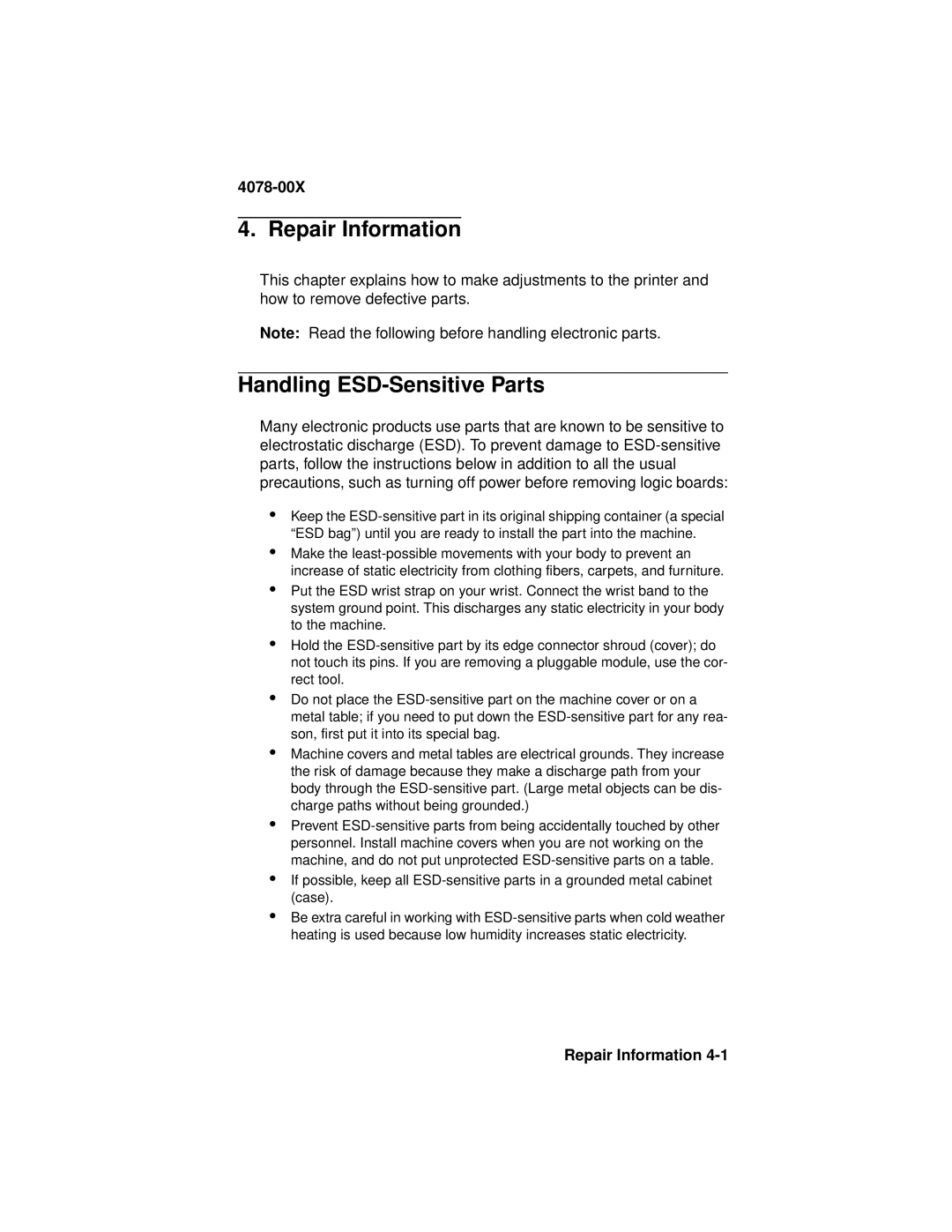4078-00X
4. Repair Information
This chapter explains how to make adjustments to the printer and how to remove defective parts.
Note: Read the following before handling electronic parts.
Handling ESD-Sensitive Parts
Many electronic products use parts that are known to be sensitive to electrostatic discharge (ESD). To prevent damage to ESD-sensitive parts, follow the instructions below in addition to all the usual precautions, such as turning off power before removing logic boards:
•Keep the ESD-sensitive part in its original shipping container (a special “ESD bag”) until you are ready to install the part into the machine.
•Make the least-possible movements with your body to prevent an increase of static electricity from clothing fibers, carpets, and furniture.
•Put the ESD wrist strap on your wrist. Connect the wrist band to the system ground point. This discharges any static electricity in your body to the machine.
•Hold the ESD-sensitive part by its edge connector shroud (cover); do not touch its pins. If you are removing a pluggable module, use the cor- rect tool.
•Do not place the ESD-sensitive part on the machine cover or on a metal table; if you need to put down the ESD-sensitive part for any rea- son, first put it into its special bag.
•Machine covers and metal tables are electrical grounds. They increase the risk of damage because they make a discharge path from your body through the ESD-sensitive part. (Large metal objects can be dis- charge paths without being grounded.)
•Prevent ESD-sensitive parts from being accidentally touched by other personnel. Install machine covers when you are not working on the machine, and do not put unprotected ESD-sensitive parts on a table.
•If possible, keep all ESD-sensitive parts in a grounded metal cabinet (case).
•Be extra careful in working with ESD-sensitive parts when cold weather heating is used because low humidity increases static electricity.

